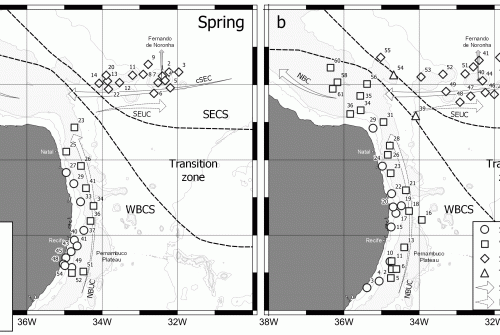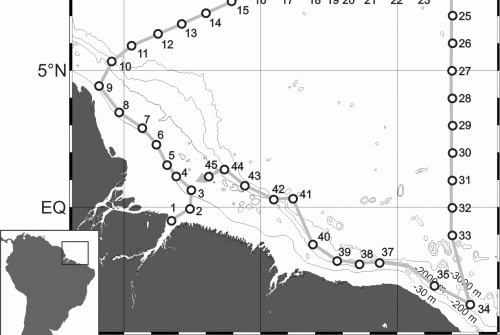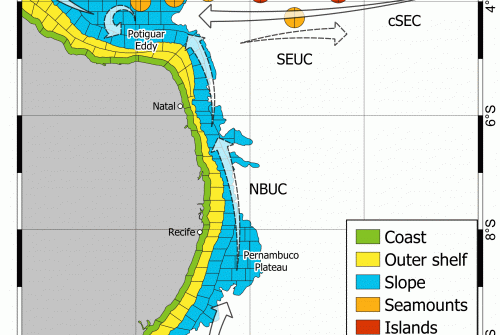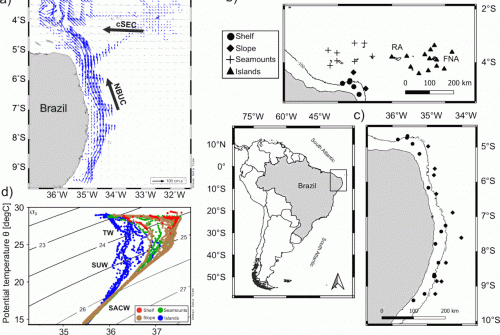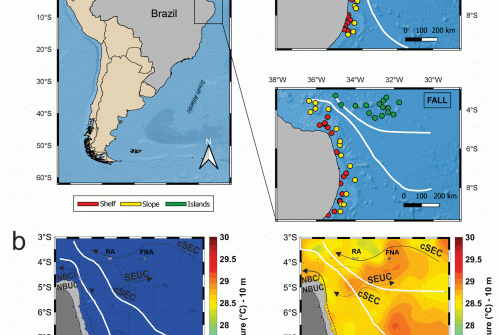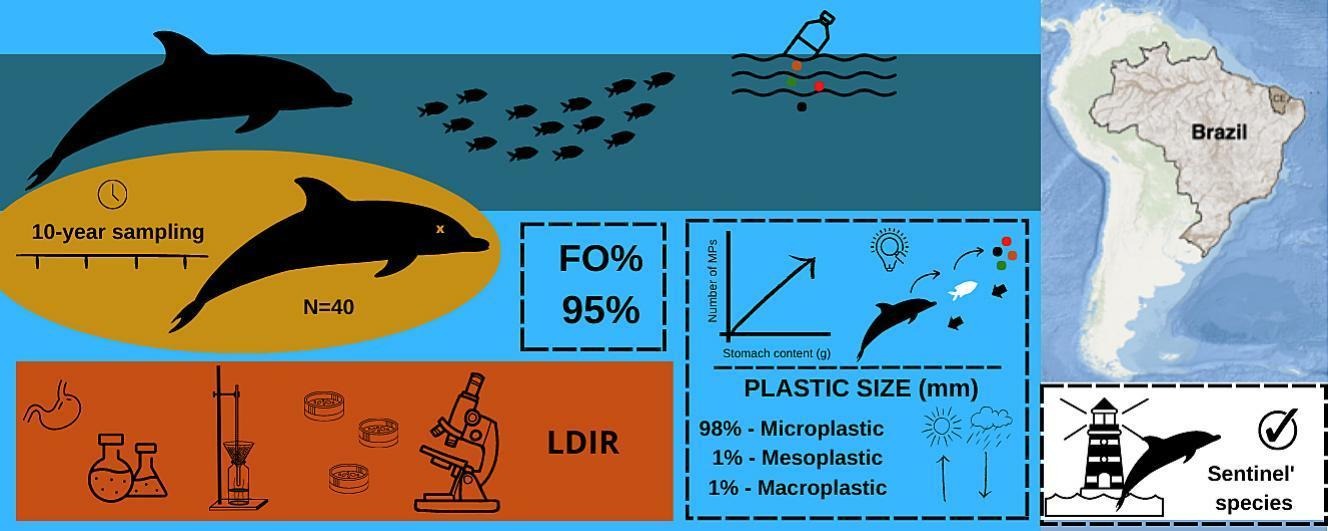
Marine mammals are considered sentinel species and may act as indicators of ocean health. Plastic residues are widely distributed in the oceans and are recognised as hazardous contaminants, and once ingested can cause several adverse effects on wildlife. This study aimed to identify and characterise plastic ingestion in the Guiana dolphins (Sotalia guianensis) from the Southwestern Tropical Atlantic by evaluating the stomach contents of stranded individuals through KOH digestion and identification of subsample of particles by LDIR Chemical Imaging System. Most of the individuals were contaminated, and the most common polymers identified were PU, PET and EVA. Microplastics were more prevalent than larger plastic particles (meso- and macroplastics). Smaller particles were detected during the rainy seasons. Moreover, there was a positive correlation between the stomach content mass and the number of microplastics, suggesting contamination through trophic transfer.
DOI:doi.org/10.1016/j.marpolbul.2023.115407
Reference
Pereira, L. G., Ferreira, G. V., Justino, A. K., de Oliveira, K. M. T., de Queiroz, M. T., Schmidt, N., … & Lucena-Frédou, F. (2023). Exploring microplastic contamination in Guiana dolphins (Sotalia guianensis): Insights into plastic pollution in the southwestern tropical Atlantic. Marine Pollution Bulletin, 194, 115407.


